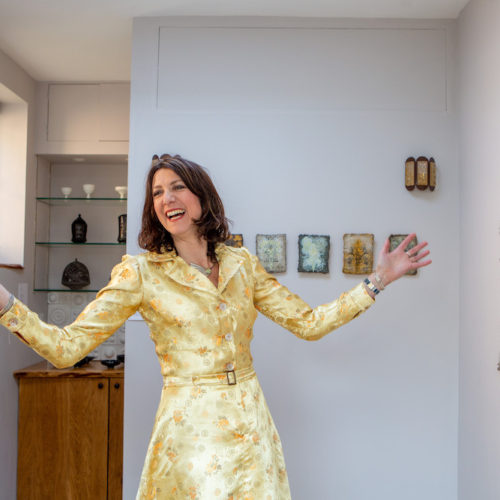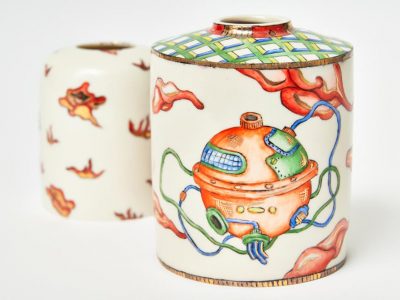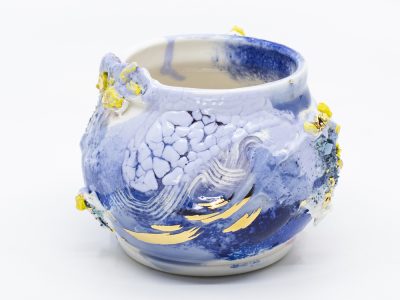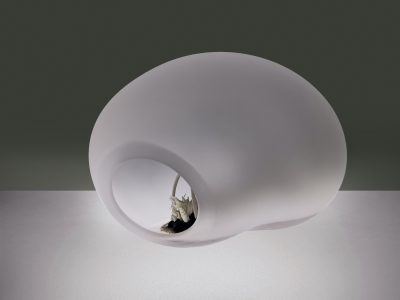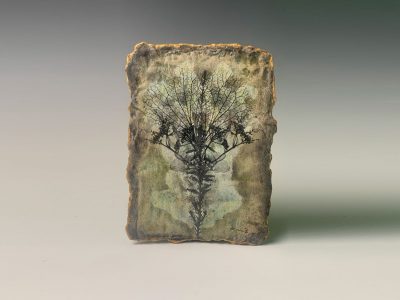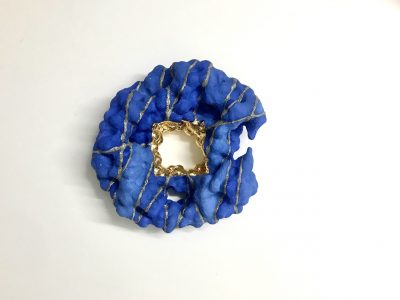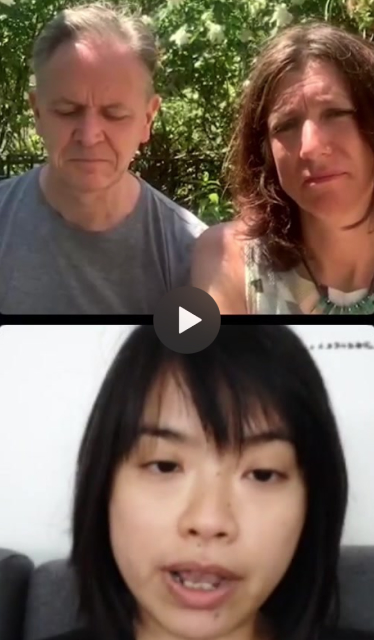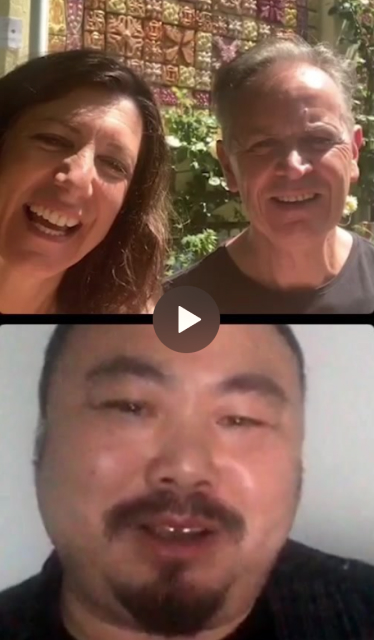Exhibition
Emptiness
is Form
An exhibition of Chinese Contemporary Ceramics
Emptiness is Form launched the INTERBEING project, an ambitious international ceramic and sound art project between British and Chinese artists which took place throughout 2021.
To accompany the ceramics on display in Emptiness is Form, we invited a selection of Chinese sound invite artists to pre-record a live, one-off performance in their home or studio using whatever materials they had to hand, which we presented on Vimeo, introduced with a live conversation through Instagram Live.
The same artists created new work for the Perfection of Understanding album contained in the book.
Introduction by J Kay Aplin
The artists involved in Emptiness is Form consisted mainly of emerging ceramists from Hong Kong, China and the Chinese diaspora. The population of China reaches out towards every corner of the globe, so it is not surprising that there are accomplished artists of Chinese heritage in many countries.
Most of the artists in the show whose domicile is in the UK studied at the Royal College of Art, always a go-to place for a curator to find talent. Monica Tong was a student at the RCA whilst Interbeing took place, which coincided with the lock-down – an unenviable challenge, to study a visual arts subject online for any period of time. She charmed the attendees of the vernissage with a playful, interactive performance, passing her sonic sculptures – elegant porcelain forms which resonate when activated with tiny beads – around the audience. Ho Lai, shortlisted for British Ceramic Biennial’s AWARD 2021, interrogates ideas through experimentation with materials and processes, creating resulting objects dense with texture, colour and mysticism. Hua Wang currently lives in Jingdezhen, her highly glossy sculptures tease with their spiky/smooth contradictions, investigating concepts such as gender, hierarchy and materialism.
I met Ling Chun when we were both shortlisted for the Young Masters Ceramics Prize. I was fascinated by her pop-bright coloured sculptures based on vessel forms sprouting human hair. Ling Chun contributed to the virtual vernissage which took place immediately before the physical one, zooming in from Seattle where she is based and expounding on the territory her work occupies in the space between craft and art. Jenny Chan also talked about her work at the online opening, from her base in Sheffield, and gave a very honest, heartening account of her experience as a mother and an immigrant and how clay became her pathway through a challenging time in her life.
Both Chun and Chan hail from Hong Kong, where a significant number of artists in the show come from. Ka Ho Ng is based in Hong Kong. His pierced forms are influenced by Laozi’s Daodejing, who attests that the main essence of ceramic art is creating space. Ryan Hui Chun Kit’s philosophy is routed in a strong belief that the goodness in life can be appreciated through the making and usage of functional pottery, a belief introduced by Yanagi Sōetsu in his seminal book The Beauty of Everyday Things, who suggests that commonplace objects “should be made with care and built to last, treated with respect and even affection. They should be natural and simple, sturdy and safe – the aesthetic result of wholeheartedly fulfilling utilitarian needs. They should, in short, be things of beauty.”
A number of artists were recommended by Guanghui Chen, head of ceramics at Shanghai Academy of Fine Arts. Kang Qing co-leads the course and was the most established artist in the show. Her exquisite tiles are truly things of beauty – layering clays, glaze, print and lustre, it is accomplished and astonishing work.
Jia Kun lives in Italy and we met whilst we were both in residence at Guldagergaard International Ceramic Research Centre in Denmark. Her quiet, contemplative works encapsulate tiny worlds within the glaze, which she manipulates the way a painter blends watercolours.
Bringing this group of artists together for our tenth exhibition kick-started the Interbeing project at a time when, at least in the UK, audiences, emerging from a winter in lockdown and having survived a year of the pandemic, were eager to experience art in person. Emptiness is Form, arranged throughout the various spaces of The Ceramic House and garden offered a welcome opportunity for live interaction.
The Ceramic House,
75 Stanmer Villas, Brighton BN1 7HN
27th May – 20th June
Opening event: 27 May
Virtual opening 5-6pm
In person 6.30 – 9.30pm
Public opening dates:
11-5pm Saturdays and Sundays 28, 30 May, 5, 6, 12, 13, 19, 20 June
Open by appointment weekdays between 28th May and 20th June. Contact us here to make an appointment.
Opening event: 27 May Featuring live performances in the garden by Monica Tong and Joseph Young accompanied by wine and a warm welcome.
EXHIBITION PHOTOGRAPHS
The title Emptiness is Form is taken from the Heart Sutra and reflects myriad ways in which the exhibitors work with the material of clay. The ceramists selected for this show represent established artists working in China and also newer emerging artists from China and around the world. All the artists have an interest in exploring both traditional techniques fused with a contemporary design sensibility offering a compelling overview of the breadth and range of contemporary Chinese ceramic practice today.
Exhibiting artists
Sound artists
To accompany Emptiness is Form we commissioned five Chinese sound artists to create new performances which were released on Vimeo preceded by introductory chats on Instagram Live. The five artists, Sheng Jie, Hui Ye, Echo Ho, Sun Wei and Sin:Ned are participating in Perfection of Understanding, a remote residency in collaboration with UK ceramic artists.

Emptiness is Form is part of the Interbeing project – an exploration of collaborative ceramic and sound art practice in Britain and China. Throughout 2021 at The Ceramic House.






